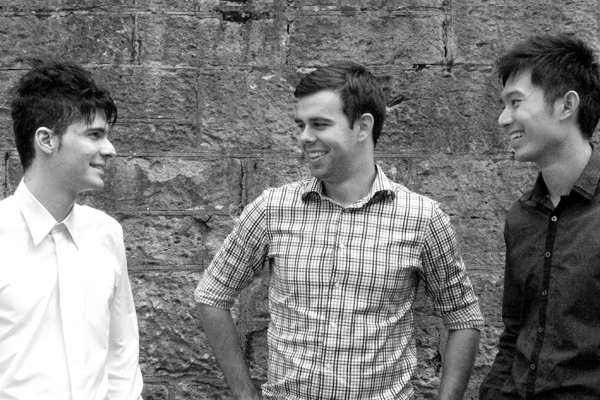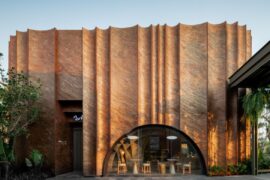Architect Teo Yee Chin takes a critical look at the mega-projects being undertaken at the Southernmost tip of Singapore
August 27th, 2012
Our city is always changing. Curved roads are straightened. Narrow ones are widened. New tunnels are dug. Towers are razed, then re-erected. When you start getting familiar with your environment, take a picture. Just in case.
Change to our surroundings is difficult, because it is always irretrievable. We can only measure it against the past in our memory. The common reaction is to lapse into sentimentality after the city is changed. But a nostalgic response, however poetic, is an impotent one.
A far more empowering position would be, instead, to see the future before the change occurs, and to actively seek to shape it. For architects and designers, this can start with understanding the master plan of the city, as the seeds of upcoming changes are often already embedded in the plan.
The New Downtown around Marina Bay, with stunning mega-projects such as Marina Bay Sands and Gardens by the Bay, is THE big change happening to Singapore now. The difference here is that a new city is emerging, from nothing. The vast and empty reclaimed land forming the New Downtown must be a virtual void in anybody’s imagination of the city. Without even a past as reference, how does the general citizen begin to comprehend this future?

The new Gardens by the Bay at Marina Bay
The effects of the New Downtown are not contained within Marina Bay itself, but are actually rippling through the rest of the island. For a start, being at the southernmost tip of the city, the intensive developments here will generate enormous volumes of people needing to converge here from the North, East and West.
At least four major infrastructural projects – the Marina Coastal Expressway, the North-South Expressway, the Thomson Line and the Eastern Regional Line – have been planned to handle this additional load. The resultant land acquisitions, razing of buildings, and road realignments, to make these projects possible, have significant impact on the heartland population.

Amidst the fireworks and light shows, critical questions remain to be asked on the New Downtown. I raise five of them here.
How mixed will land use be?
The authorities have already realised that the New Downtown should include residential and hotel use, in addition to office and commercial use. This appears to be directed towards achieving the image of a vibrant city, that stays alive even after-hours. But how deep is the conviction to provide housing in the city? To go beyond a superficial rendition of “live-work-play”, such a programmatic mix must even include schools to cater to working parents, as well as community or religious institutions to sustain a certain soul in the city, beyond pure commerce.
Apart from land-use, can there be a variegated physical scale in the planning of the New Downtown?
The old CBD has a mix of shophouses and skyscrapers, with a range of scales in between. This is interesting. It is a result of the city being modified over many decades. From the plans, it appears that the New Downtown will be a uniform compilation of tall blocks with podiums. There remains an alternative to have selected streets with a much smaller size of land plots. These smaller plots can then be owned by less speculative organisations – small businesses or even NGOs and social enterprises. These smaller buildings and land-owners can add a more intimate scale to the city, otherwise dominated by the big-capital developers.
Besides the New Downtown, the land on the south and southwest of the Gardens by the Bay are marked as the new planning areas of Straits View and Marina South. How will these reserve sites be developed?
The Concept Plan 2001 had designated these as residential areas. If these are indeed to be dominantly for residential use, they should not be conceived as separate districts, but as a continuation of the New Downtown. The developments in these new residential areas should, like commercial developments in the Downtown, abolish setbacks, with buildings that abut and engage the street space. The continued adherence to the gridded city plan, with further sub-divisions following alignments with the New Downtown, will also enhance this continuity across the districts. My fear is that being next to the waterfront, these reserve sites will revert to a surburban model like Sentosa Cove or Tanjong Rhu, as a cluster of rich, gated communities. That would be losing a great opportunity to create an urban vitality between the different districts.

How does the New Downtown maintain a continuity with the old city, in terms of history and geography?
With the realignment of ECP, the urban fabric where the CBD borders the ECP-AYE will be radically altered. Conservation of existing buildings such as the Singapore Conference Hall will help to preserve a connection to the past. One threatened building worth conserving would be Haji Muhammad Salleh Mosque, currently perched precariously next to the ECP. Apart from conservation, the gridded plan offers great potential to connect old and new. The continuity is both experiential and visual. It should remain comfortable to walk across Shenton Way. Alignments of old and new roads across Shenton Way/Raffles Quay will create memorable vistas from the old city to the new, right through to the waterfront. In particular, Cross Street from the old CBD and Central Boulevard should be rigorously aligned to make a strong link between the different eras of development.
Will the new city cater to a range of income groups?
It does not take much to guess that residential properties in the New Downtown will be in the high-end luxury market. If condominiums like The Sail, Marina Bay Suites and One Shenton are any reference, the units will largely be purchased by investors, and rented out to high-rolling expatriates. Following on from the earlier point about mixed use, how sustainable is a Singaporean lifestyle in the new city? Will the vision of live-work-play be made untenable by how residential development is conceived? The Pinnacle@ Duxton, the HDB residential development in Tanjong Pagar, offers hope yet that not all residential parcels have to be luxury real-estate products.
Commercial yield aside, the State will realise that it is crucial in today’s political climate not to alienate local communities in the making of the future. It is exciting for Singapore to finally have an extension of the historic business district. For now, it is crucial to remember that the city is not just an economic space, but will inevitably also be the milieu for complex, socio-cultural interactions. The new skyline must be, to the common man, more than just the pretty backdrop to future National Day Parades, viewed from afar.
Hero image: Gardens by the Bay, aerial view
The writer is an architect in private practice. The article is written with information gathered from publicly available sources such as Master Plan 2008, Onemap.sg, publications, and recent news releases.
A searchable and comprehensive guide for specifying leading products and their suppliers
Keep up to date with the latest and greatest from our industry BFF's!

BLANCO launches their latest finish for a sleek kitchen feel.

BLANCOCULINA-S II Sensor promotes water efficiency and reduces waste, representing a leap forward in faucet technology.

Elana Castle meets with Amy Edwards of Arkhefield to follow up on the outcome of their 2013 Internship Competition
Pulse is an innovative new conference table with a range of hidden features.

#SID17 is an absolute immersion in Australian architecture and design. And, year-on-year it proves why the entire global design industry needs to get together and present their R&D to push us all forward.
On 27 February, in a provocative lecture, Rudy Uytenhaak will address the problem of how to deal with explosive city growth as more people prefer to live in cities and larger spaces. Uytenhaak argues that we should invest in attractive ‘cities full of space’: intensive, sustainable land-use that provides people with access and proximity to opportunity.
The internet never sleeps! Here's the stuff you might have missed

The British architect joined Timothy Alouani-Roby for a live recording with an audience of enthusiasts in Sydney.

IDIN Architects creates another spectacular project following its win in The Social Space category at the 2024 INDE.Awards.